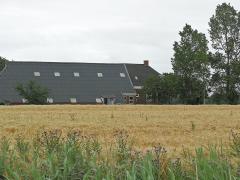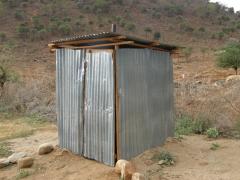Building Bridges from the Present to Desired Futures - Evaluating Approaches for Visioning and Backcasting
Backcasting explores how to reach ambitious societal goals--- identifying strategic choices and windows of opportunity. After early applications in the 1980s, this approach to scenario analysis is now receiving interest again. A workshop co-sponsored by PBL Netherlands Environmental Assessment Agency found that, among the current approaches, a key difference is how much prominence is given to stakeholder participation.
Backcasting: pegged to societal vision of sustainable future
The determining feature of backcasting is its reverse analysis: from the future to the present. A backcast study sets out from an ambitious societal vision – for example, for a town, country or region. Main alternative routes to realise the vision are then mapped. Crucially, such backcasting also identifies key decisions to be made, in the near future, in order to ensure longer term goals will remain within reach. For example, decisions on urban layout, tax system or the power grid.
International workshop reviewing backcasting approaches, 2011
In March 2011, PBL and the Central European University co-sponsored a worldwide workshop that reviewed results of various approaches and examples from practice. It focused on effectiveness — what works and what does not? The workshop was held in Budapest under the aegis of The Integrated Assessment Society. PBL reported on two of its studies: ‘Sustainable City’ (participatory backcasting) and ‘Getting into the right lane for 2050’ (expert-based backcasting).
Promising approach in guiding national efforts towards 2030 Sustainable Development Goals (SDGs)
Because of the current, growing interest in developing strategies towards medium and long-term objectives such as the Sustainable Development Goals, contributions to the 2011 workshop were considered too relevant to leave unpublished. Therefore, they have been retrieved, marginally updated and published.
Most important differences among approaches reviewed: participation, quantification
Similar to most environmental outlooks, backcasting builds on detailed expertise, storylines and numbers. For example, numbers on annual rates of resource productivity improvement. In addition, many, but not all, backcasts involve extensive consultation with stakeholders. For example, in articulating the guiding vision. The weight of these two aspects in the studies’ analyses, findings and positioning was found to vary strongly. However, in all of the 15 cases reported, both participation and quantification were found to be essential.
Related content
- The sustainable city (article, 2012)
- Getting into the Right Lane for 2050 (publication, 2009)
- Meanwhile, PBL’s long experience with approaches to a wide range of outlooks has been made available for Dutch-language readers as a guidance document: Scenario's maken voor milieu, natuur en ruimte: een handreiking
Authors
Specifications
- Publication date
- 1 December 2016
- Publication type
- Publicatie
- Publication language
- Engels




